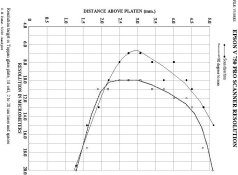because I am finding it impossible to keep the ANR "glass" (I think it's really plastic) in the Epson holders free of dust.
Glass cannot manufacture dust

This is a very good advice: Get an HEPA (cheap) air purifier.
I have this one:

Start it (depending on room size) 5min before you manipulate negatives, better if the room is small with no dusty things, use clothes not prone to generate dust, etc. Useful to dry the negatives, in the darkroom, etc, etc. You also may use a programmer imn the socket to start it several times per day to have a dust free room.
But if I understand correctly, best practice is to lay the film so that it bows towards the ANR glass - the glass will then flatten it. My negatives almost always bow in the center, not at the edges, and arc "up" with the emulsion face down. Loaded that way, then, the frame numbers would not be inverted - and scanned images would then need to be flipped. (I think this would be an issue even without the Beterscanning ANR glass - even using the "T-locks" alone, film would still be scanned emulsion side down. No?)
Betterscanning holders have a nice Pro feel. The Epson ones do the same but they feel like cheap plastic.
If you have sharp negatives then your priority is film flatness and having ajusted the optimal height.

With only 1.5mm shift from the ideal height position you het half the resolving power in the best axis. blatbeds have an slightly lower resolution in the motion direction, but anyway any shift in the height end in a remarkable preformance loss, still this will only be noticed in very sharp negatives, many handheld shots are not perfect.
Also, reportedly, if film is not making good contact to the ANR glass then "rainbows" can be projected on film. Some reviews attacked the new ANR holders without them being smart enough to use hem properly.
Let me tell some recommendations.
> For negative color film use Negafix feature in Silverfast, it delivers Pro grade color inversions.
> Use Silverfast Multi-exposure for velvia when wanting to recover deep shadows.
> Scan 16 bits per channel, and save in TIFF format, jpg only saves 8 bits per channel. If you take all histogram you'll get a dull image, but you will keep your choice open when editing in Photoshop or equivalent.
> Be proficient with Photoshop (or equivalent), be proficient with layers and non destructive edition. Sharpening is an art, do not oversharpen, use different sharpening strategies depending on the image region. For example locally sharpening the eyes in a portrait may require a custom job, use also layers for that.
> A Nmve or ssd storage is great, you can scan at higher resolution then downsample to edition resolution that has to be higher (if possible) than the release resolution. Have an specially sound workflow for important images.


 Especially if reversing the image results in reduced quality/sharpness. On the other hand, if the betterscanning holders keep the film flatter with the emulsion side down (instead of up), reversals might be an acceptable nuisance.
Especially if reversing the image results in reduced quality/sharpness. On the other hand, if the betterscanning holders keep the film flatter with the emulsion side down (instead of up), reversals might be an acceptable nuisance.

